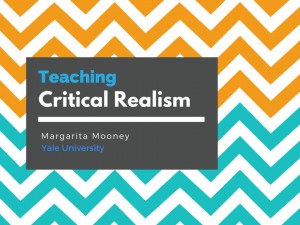Part 4 of a Series on Teaching Sociology of Religion Online.
Earlier in this series of posts about my experience teaching sociology of religion, I wrote about the promise of delivering lectures online and the challenges I faced in actually doing it. Today I’ll explain how I finally created my first narrated presentation on YouTube, how I got small group discussions going on Elluminate, and how my 8-year old nephew taught me about online teaching all the while teaching me about the correct usage of metaphors and similies.
Once I finally sank my money into a MacBook Pro, I quickly mastered Keynote, with its built-in features to save recorded presentations as movie files and upload them to YouTube (thanks to an encouraging comment I got on a previous blog, I’m definitely a Keynote user now). With permission from my University of North Carolina colleague Lisa Pearce, I narrated over a presentation she had previously given to my class on her book A Faith of Their Own: Stability and Change in the Religiosity of America’s Adolescents. For years, I’ve been telling my students “I want to be on YouTube!” and now I finally did it! (If you click on the image below, my YouTube lecture will start.)
http://www.youtube.com/watch?v=lIsLBILUXHg&feature=youtu.beWhat amazed me was that making the narrated presentation was the easy part. It took longer to save it in the right format and upload to YouTube than to record my explanation of the slides. But thanks to Keynote and YouTube, the file is now compressed so students (or any viewers, including you) can see it without any problems. My previous problem was not in making the recording presentations, but sharing them. Thanks to my Mac, and lots of encouragement and tech support, I found success at last!
I was so excited by my YouTube debut that I took my Macbook with me to visit my mom and brothers (and I used my super-powerful MacBook battery to recharge my Iphone during the 5-hour drive–I lost the car charger but the MacBook does the trick). As soon as I arrived to visit my relatives, I whipped out my MacBook to show them the presentation on YouTube. My crowing moment of glory was when my 6-year old niece sat down in front of my YouTube presentation and scrolled through it. I don’t know what she learned, but just the fact that I could present something in a format that is so portable and flexible is thrilling.
Later I peered over the shoulder of my 8-year old nephew who is taking an advanced online English class through the Johns Hopkins University’s Center for Talented Youth. His instructor is an avatar named Pilar. He was following Pilar’s lesson on metaphors, similes and idioms. I learned a bit from Pilar and her advanced 8-year old online pupils: perhaps when doing online teaching, it’s better to break content delivery (like recorded lectures) into shorter segments of 15 minutes broken up by an exercise, like applying a concept.
My nephew certainly engages with his online class and learns, as evidenced by how he spent the whole weekend asking me and his mom to apply what he learned about definitions and usages of metaphors, similes and idioms. His mom and I, ummm…. had to look up things online to remember the difference between those three parts of speech and when I tried to give him examples of metaphors, he would correct me saying, “That’s not a metaphor, that’s a simile because it has ‘like’ or ‘such as’ in it.” To which I replied, “I’m a college professor, and you are correcting me!”, but he seemed non-plussed and frankly he was right. So I stopped, put aside my hurt pride, and thought, “Well, these are my future students–learning online from the start. I had better catch up!”
Later during the visit, I delivered an online lecture on race and religion from my mother’s living room using Elluminate. As I animatedly lectured to my 15 online students, my mother sat in the background taking notes and, yes, bursting with pride. Mid-way through the lecture, I tried a new trick: with the click of just one button, Elluminate split all my students in groups of 3. I typed 2 questions in the chat box (what explains the racial segregation of American churches and what would you do to reduce racial segregation of your church if you were a pastor) and asked them to discuss them with each other.
We had never practiced this tool, and I didn’t warn them it was coming, so I wondered if it would work. It worked wonderfully! As the moderator, I could see all their mics turned on, and even read some chat messages. I popped into each of the 5 online discussion rooms, heard some of the main points, and learned a whole lot from my students. I then called them all back to the main room, had someone from each group summarize the main points of the discussion while I wrote it on the whiteboard. Amazing. One of my students later commented that online group discussions work better than live ones, because in a large class with 10 groups of three people, it’s often hard to hear what your own group members are saying.
The experience was all the more amazing that I did all that with my mom in her comfortable Lazy Boy chair looking on with delight. To wrap up that excellent session, I took the computer over to my mom and introduced her online, which provoked all kinds of applause and cheery chat messages from my students. How fun! When I held online office hours using Eluminate a few days later, one of my students even asked, “Is your mom there so I can say hi?” I had to disappoint her, unfortunately, but online office hours were great! No need to exchange Skype ids or phone numbers, I just created a special Elluminate session and used the new “meeting” tool in Sakai to set up office hours, which filled immediately.
I have 2 more weeks to go of this online summer course, so stayed tuned for updates on my next set of adventures in teaching sociology of religion online. I plan to reflect on online grading of papers and tests, among other things.











